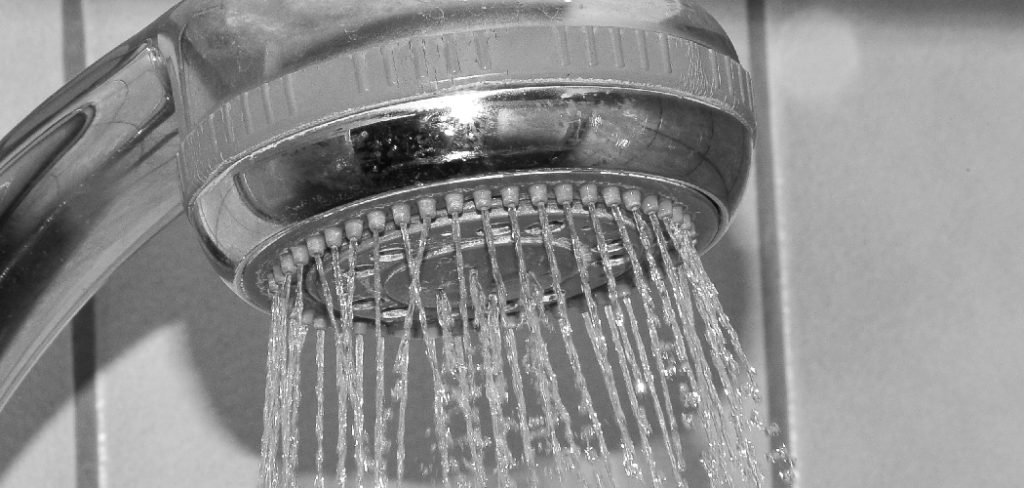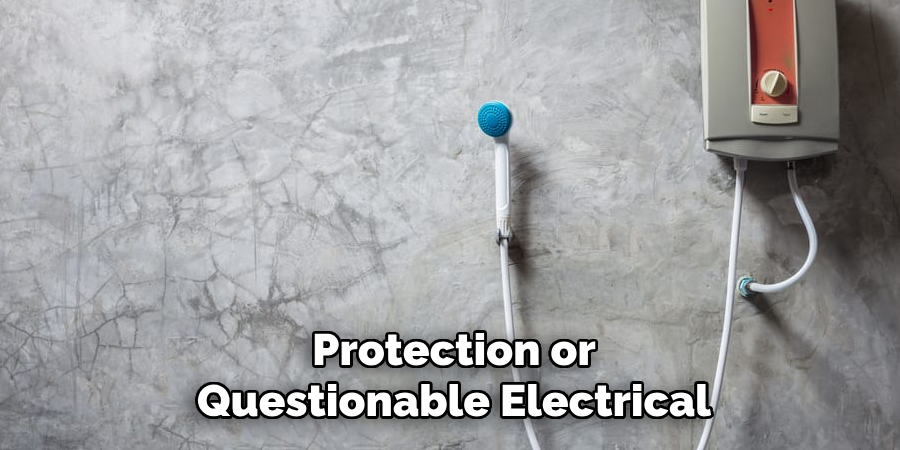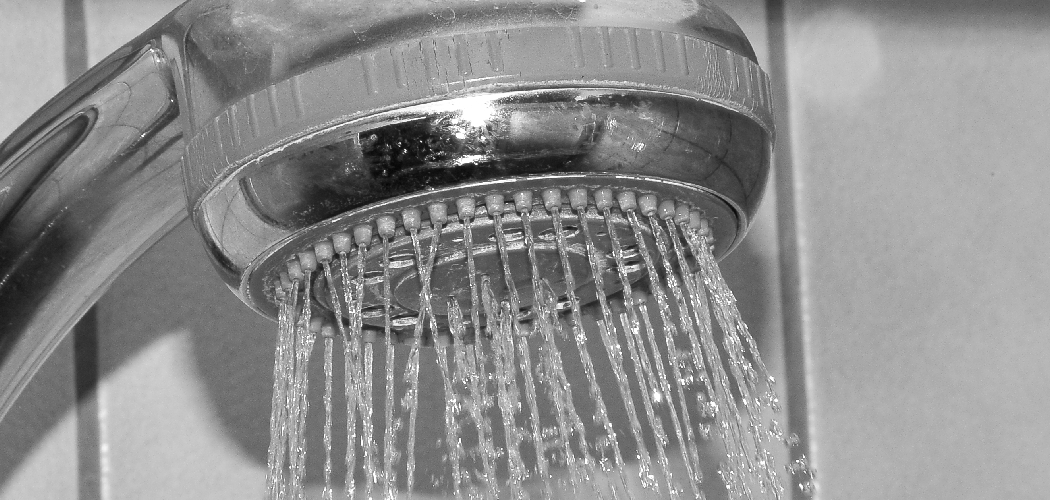Are you tired of taking cold showers when there’s no hot water? Don’t worry, you’re not alone. Many people have experienced the frustration of turning on the shower only to be greeted by a blast of icy cold water. But fear not. There are ways to take a hot shower even when your hot water is out.

Sometimes, you might find yourself in a situation where hot water is unavailable, whether due to a broken water heater, a camping trip, or other unexpected circumstances. Taking a comfortable, warm shower might seem impossible in such conditions, but with a bit of creativity and resourcefulness, you can still enjoy the benefits of a hot shower.
This guide on how to take a hot shower with no hot water will walk you through practical methods to create a warm showering experience, even when hot water isn’t readily accessible.
What Are the Benefits of a Hot Shower?
Before we delve into taking a hot shower with no hot water, let’s first understand why taking a hot shower is beneficial. Here are some of the benefits you can enjoy from taking a hot shower:
- Relaxes Muscles and Relieves Tension: A hot shower helps to loosen up tight muscles and release tension in your body.
- Improves Blood Circulation: The warm water causes your blood vessels to dilate, increasing circulation and delivering essential nutrients throughout your body.
- Cleanses Skin: Hot water opens up pores and allows for a deeper cleanse, helping remove dirt, oil, and dead skin cells.
- Reduces Stress: Taking a hot shower can be an excellent way to relax and unwind, reducing stress levels and promoting a sense of calmness.
- Promotes Better Sleep: Increasing body temperature from a hot shower can help induce sleep by relaxing your body and mind.
Overall, taking a hot shower has numerous physical and mental health benefits, making it an essential part of our daily routines. So, let’s explore some ways to take a hot shower even when there’s no hot water available.
What Will You Need?
To take a hot shower with no hot water, you must gather a few items beforehand. These include:
- Large Pot or Bucket: This will hold and heat up the water for your shower.
- Water Source: If you’re at home, you can use tap water. However, if you’re outdoors, consider using bottled water or boiling river or lake water for safety.
- Heat Source: You will need something to heat the water, such as a stove or campfire.
- Towel: Don’t forget to have a towel handy for drying off after your shower.
Once you have these items ready, you’re all set to take a hot shower with no hot water.
9 Easy Steps on How to Take a Hot Shower With No Hot Water
Step 1. Prepare the Water:
Start by filling your large pot or bucket with water from your chosen source. If you’re using tap water, make sure to fill enough to provide an adequate amount for your entire shower. If you’re outdoors, ensure the water is clean and safe, boiling it if necessary to kill any bacteria or pathogens. Once you have the water ready, move on to heating it. This step is crucial, as the amount of water you prepare will determine how comfortable your shower experience will be.

Step 2. Heat the Water:
Place your pot or bucket of water over your heat source. If you’re using a stove, adjust the heat to medium or high, depending on your preferred heating speed. If a campfire is your heat source, position the pot securely over the flames to avoid accidents. Monitor the water temperature as it heats. Ideally, the water should be warm but not scalding. You can test its temperature carefully by dipping your fingers or using a thermometer, aiming for around 100–110°F (37–43°C).
Step 3. Prepare for the Shower:
Once the water is heated to your desired temperature, carefully remove it from the heat source. Pour the warm water into a portable shower bag, bucket, or any container you use for your shower. Ensure the container is secure and easy to handle. If you’re using a shower bag with a nozzle, attach it properly and verify the water flow by testing the nozzle. For a bucket, you may need a cup or a smaller container to scoop out the water. Set your shower area by choosing a spot with adequate drainage and privacy. Have your soap, shampoo, and towel ready within reach to ensure a smooth and efficient showering process.
Step 4. Take a Shower:
Stand in your prepared shower area and wet your body with the warm water. Use the shower bag nozzle, cup, or smaller container to pour the water carefully over yourself. Apply soap and shampoo as needed, lathering thoroughly while ensuring you conserve water. Rinse off by gradually pouring the remaining warm water, ensuring all soap and shampoo are washed away. Be mindful of your surroundings to avoid excessive water spillage, especially in a shared or natural outdoor setting. Once done, dry off with your towel and pack up your supplies to maintain a clean and tidy area.

Step 5. Clean Up and Store Supplies:
After completing your outdoor shower, take a moment to clean up the area. Dispose of any wastewater properly, ensuring it does not harm the environment or disturb others. If you use soap or shampoo, verify that they are biodegradable to minimize environmental impact. Dry your shower bag or container before packing it to prevent mold or unpleasant odors. Organize all your items back into your gear or storage space, making them readily available for your next use. Leave the area as clean as you found it, respecting nature and maintaining courtesy for others who might use the space.
Step 6. Review and Reflect:
Take a moment to review your outdoor showering experience and reflect on any improvements for next time. Consider whether you packed all the necessary items, used eco-friendly products, and efficiently managed your time and resources. Reflecting on these aspects ensures that future outdoor showers are more seamless and enjoyable. Additionally, take pride in maintaining environmental responsibility and leaving the area pristine for others.
Step 7. Enjoy the Experience:
Remember to take the time to immerse yourself in the experience as you shower outdoors. Feel the connection to nature, whether it’s the sun’s warmth, the sound of rustling leaves, or the refreshing sensation of cool water. Outdoor showering is not just about hygiene—it’s a moment to rejuvenate and appreciate the natural world. Being present in the moment can enhance your outdoor adventures with a sense of calm and mindfulness.
Step 8. Pack Up Responsibly:
After enjoying your outdoor shower, ensure you leave no trace behind. Collect all your belongings, including toiletries, towels, and portable shower equipment. Dispose of any waste properly, following the principles of Leave No Trace. If you used biodegradable soap, verify that it was utilized to minimize environmental impact. By packing up responsibly, you preserve the natural setting for others to enjoy and help protect the environment.

Step 9. Alternatives for Heating Water:
When planning your outdoor shower, consider various ways to heat the water, depending on your location, resources, and preferences. One simple method is using a solar shower bag, which harnesses the sun’s power to warm the water naturally. Place the bag in direct sunlight for a few hours, and you’ll have pleasantly warm water for an eco-friendly option.
If you’re in a hurry or lacking sunlight, a portable propane water heater can provide an efficient and convenient solution. These devices quickly heat the water and are ideal for campers who prioritize comfort and save time. Alternatively, you can heat water over a campfire or portable stove, ensuring safety precautions are in place to avoid accidents. For cold-weather outings, insulated water containers can help maintain water temperature longer.
Following these steps and considering different heating options allows you to have an enjoyable and comfortable outdoor shower experience anywhere.
5 Things You Should Avoid
- Skipping Preparation: Before attempting to heat water manually, ensure you have all the necessary tools, such as a heating device, buckets, or kettles. Neglecting preparation can make the process harder and more stressful.
- Ignoring Safety Precautions: Be cautious when heating water using a stove, kettle, or other heat sources. Overheating or spilling hot water can result in burns or other injuries, so always handle with care.
- Using Too Little Water: It’s easy to underestimate how much water you’ll need. Avoid starting the process with insufficient water, as this can leave you stranded mid-shower and make the process inconvenient.
- Pouring Hot Water Directly on Yourself: Never pour hot water directly onto your body. Mix it with cold water in a bucket or container to achieve the right temperature and avoid burns.
- Using Makeshift Heating Methods: Avoid using unsafe or unapproved methods to heat water, such as open flames with no protection or questionable electrical devices. These methods can be dangerous and lead to accidents.

Conclusion
Taking a hot shower without access to hot water may seem challenging, but with proper preparation and safety measures, it can be done effectively.
By heating water safely, mixing it to the right temperature, and using suitable tools like buckets or ladles, you can mimic the experience of a regular hot shower. Avoid rushing the process or taking shortcuts that could compromise your safety or comfort.
Hopefully, the article on how to take a hot shower with no hot water has been helpful and informative.

